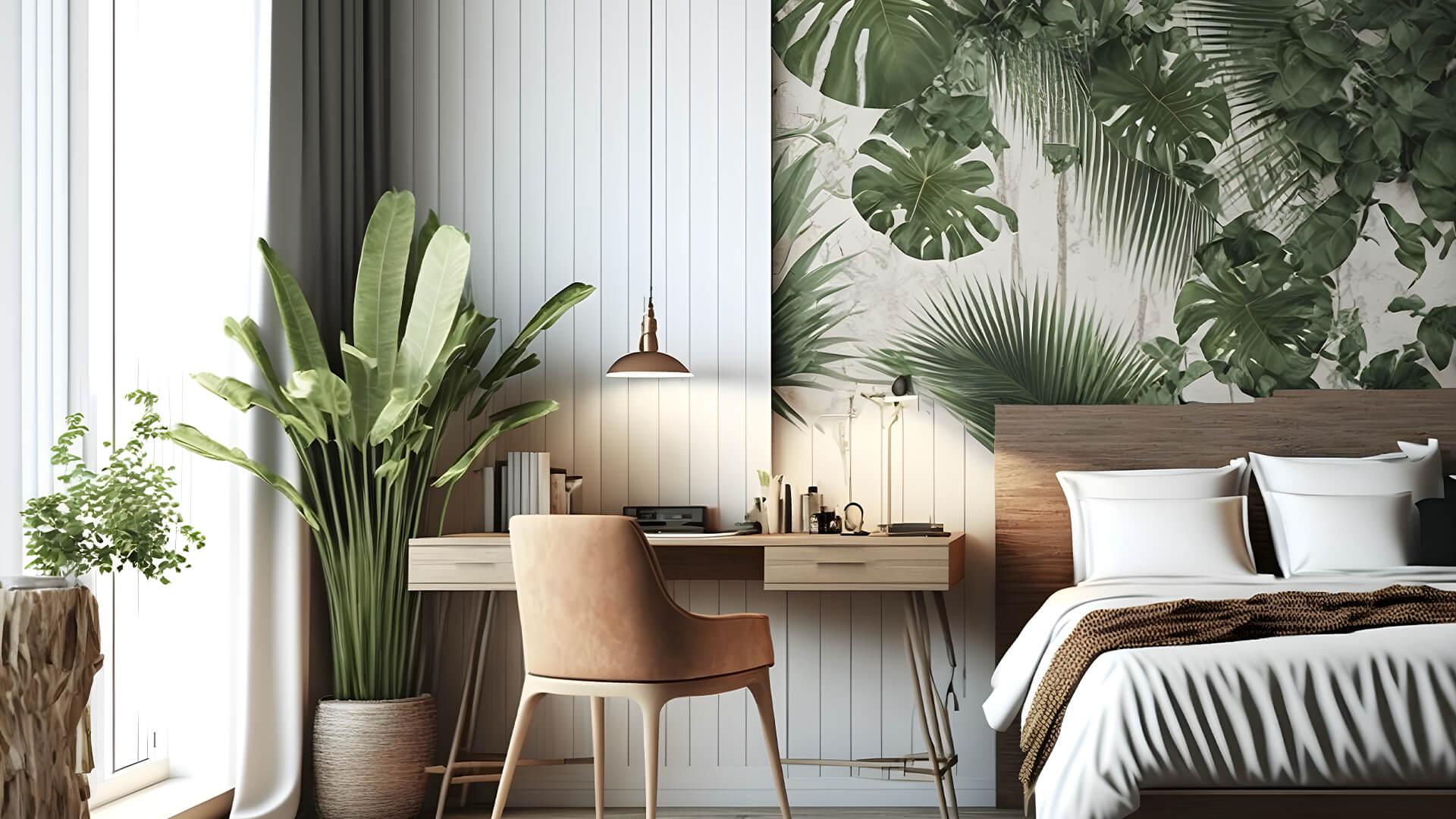When it comes to hanging your wallpaper, avoiding the dreaded creases and bubbles can be a challenge. To help you get a professional, smooth wallpaper finish, Olivia Hunter, decorating specialist at Wallpaper IT shares her five must-know tips…
1. Use sandpaper to prep your walls
Olivia says: “Bubbles and creases in your wallpaper are caused by pockets of air getting trapped beneath the paper. They can leave your walls looking unfinished and unsightly, if not treated throughout the application process. To avoid the appearance of wallpaper bubbles, you must ensure that the walls you’re working on are properly prepped before starting to apply any wallpaper.
“We always recommend using light sandpaper to smooth the surface and applying a layer of primer before going in with your wallpaper adhesive. This will help to strengthen the surface and reduce the likelihood of the wallpaper lifting or bubbles forming.”
2. Don’t rush and allow time for booking
“A common mistake people make when wallpapering is being impatient and rushing the process. If you’re wallpapering for the first time, you might be unaware that wallpaper paste needs to rest and activate before touching the walls.
“Bubbles are more likely to form if there is a weak bond between the wallpaper and the wall. To avoid this, you must allow for booking, referring to the period where your wallpaper should “rest” while the glue activates. This process allows the paste to penetrate the wallpaper while keeping it from drying out before hanging.
“Every wallpaper is different but each will come with a manufacturer’s guide that should include a recommended booking time.”
3. Brush wallpaper from the centre first
“There are a few tips and tricks that decorators learn which make the application of wallpaper much easier.
“When you’re happy with the alignment of your wallpaper, apply pressure using a brush and smooth down from the centre first, then brush outwards towards the edges. Using this technique consistently will help you to avoid air becoming trapped beneath each strip of wallpaper.
4. NEVER wait for it to dry
“If bubbles do start to appear, don’t be afraid to lift the wallpaper up around the bubble and smooth it back down using the same brush technique. Alternatively, if it’s a small bubble you can try using a wallpaper brush to push the air towards the edges of the wallpaper.”
“It’s better to catch the bubbles whilst the wallpaper is still wet – if discovered when dry, the bubbles will be difficult to fix without causing creases in the paper.”
5. Open your windows to aid drying time
“If the room is particularly humid or draughty, this will affect the wallpaper’s final finish. Upon completion, and even during the process, consider how much air is being circulated around the room and open your windows for 5-10 minutes to help the wallpaper dry evenly.”

































